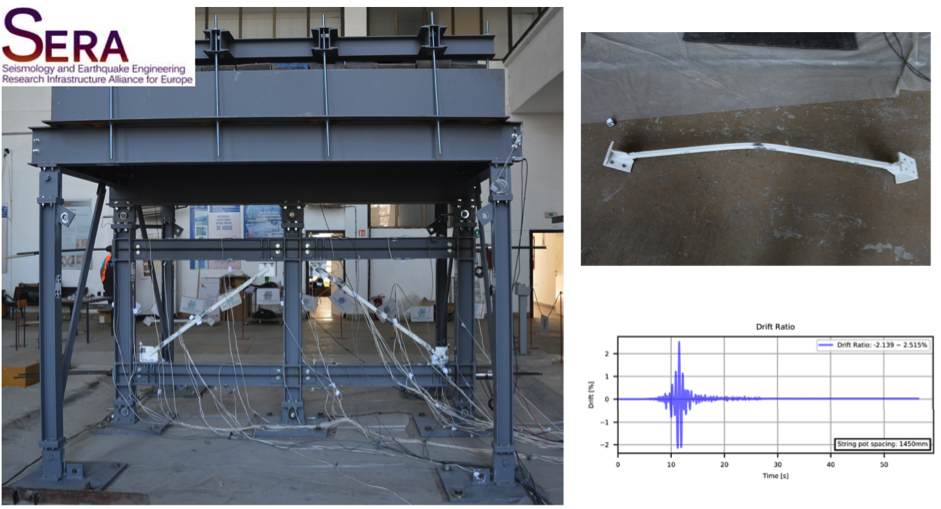
SC-CBF

- Title
-
Investigation of Seismic Deformation Demand, Capacity and Control in a Novel Self-Centring Steel Braced Frame (SC-CBF)
- Start Date
-
1st May 2017
- End Date
-
30th April 2020
- Coordinator
Introduction
Seismic design codes seek to limit structural displacements to minimise damage; however, no explicit consideration is usually given to the state of the structure after the earthquake, which can be critical for re-occupancy, monetary losses and the speed that repairs can be carried out.
This project furthers the development of a novel system designed to control residual deformations in braced steel frames, creating more resilient structures.

Aim
An integrated experimental and numerical research programme were completed, the central element of which was a set of shake table experiments on single-story self-centering concentrically braced frame (SC-CBF) models subjected to a variety of seismic actions.
The aim of these tests was to assess the effectiveness of a novel self-centering system in controlling global deformation demand in CBFs, including the sensitivity of SC-CBF response to ground motion characteristics. Correlative pre-test predictions and post-test simulations using pushover and time-history analysis were carried out to support these experiments.
Work Packages
Brace member and connection details were varied between experiments to investigate a range of structural properties relevant for European design practice. In each experiment, three separate tests were performed with table excitations scaled to achieve performance levels corresponding to elastic response, brace buckling/yielding and brace fracture.
Deliverables
The results included residual frame and brace deformations, brace ductility demand and capacity; the influence of connection detailing on maximum and residual deformations; and measurements of effective stiffness and equivalent viscous damping in SC-CBFs.
Numerical model validation could facilitate simulation of the seismic response of CBFs buildings with deformation control systems using a wider range of braces, connections and ground motions to support the evaluation and development of Eurocode 8 design guidance for CBFs.
Publications
Follow the links below to view related publications:
DDBD assessment of steel CBFs using full scale shake table tests with realistic connections.
Numerical simulation for steel brace members incorporating a fatigue model.
Contact
Jamie Goggins, NUI Galway.
Email: ei.yawlagiun@sniggog.eimaj



